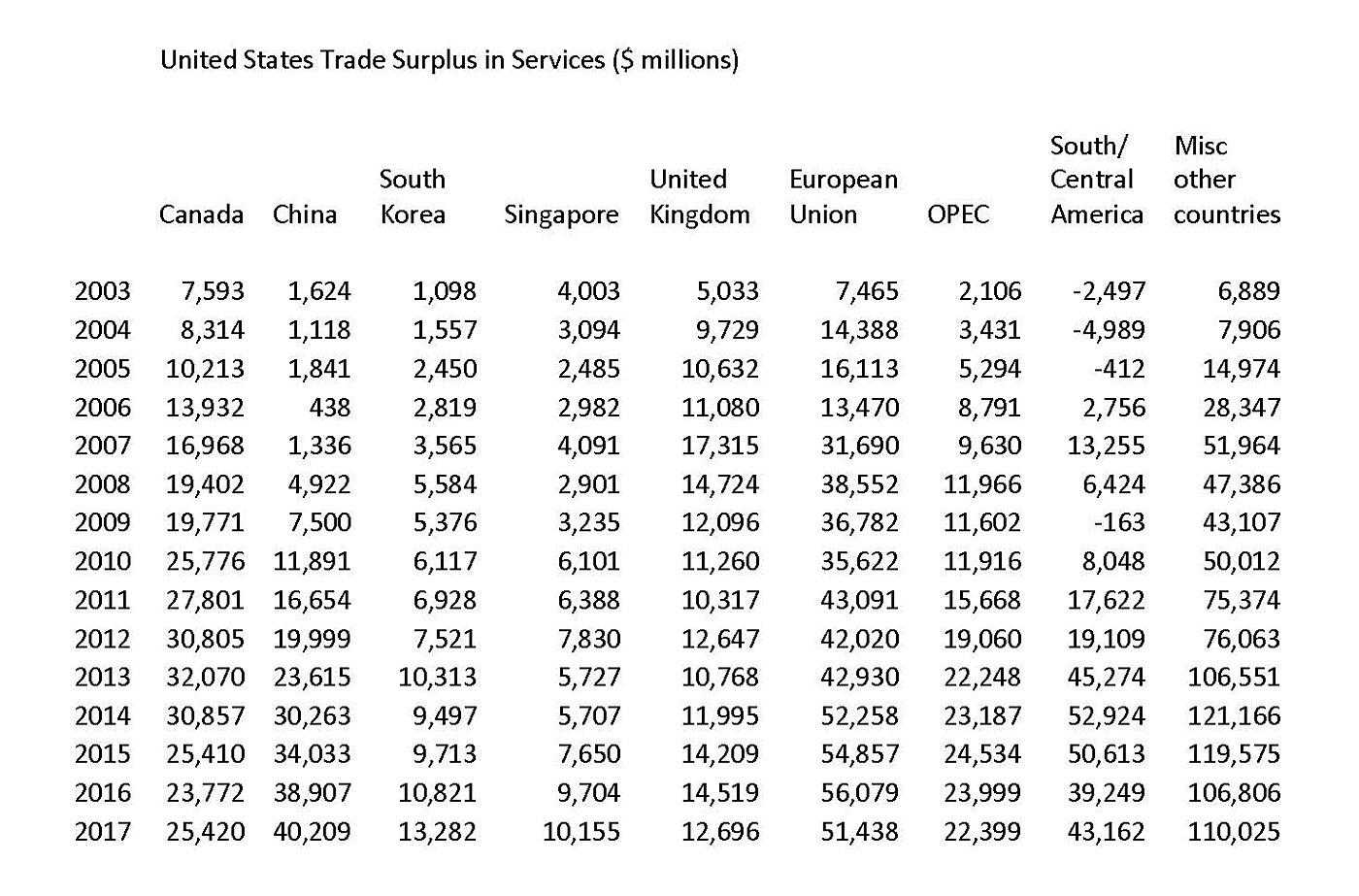President Trump and others who are mistakenly troubled by trade deficits with specific countries should at least get the facts straight. To fret about trade deficits in goods alone (ignoring services) is hopelessly old-fashioned in a world where the most exciting business and investment opportunities are typically in the service industries. U.S. businesses are famously outstanding in software and communications services, health and education services, food and lodging services, legal, financial, accounting and marketing services, and so on. Hollywood, Wall Street, Madison Avenue, Las Vegas and D.C.’s K‑Street lawyers have always been known for their services, not “making stuff.”
The table shows a rapidly growing U.S. trade surplus in services with many important economies and regions. The U.S. services surplus tripled from 2003 to 2017 with Canada and was 7‑times larger for the EU, 12-times larger for South Korea, 25-times larger for China. Rising trade surpluses in services have become large enough to more than offset the trade deficit in goods with some major trading partners – notably Canada. For all countries combined, of course, the surplus in services is not yet large enough to offset the familiar cyclical uptick in the trade deficit in goods (most imported goods are industrial components and materials). But it does not take much imagination or statistical expertise to envision an interesting trend in that direction.

